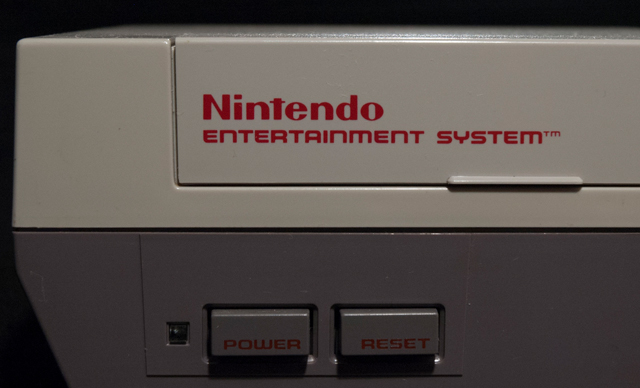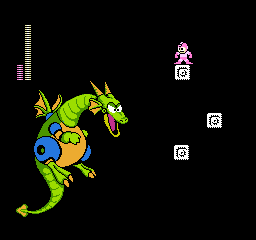The Mega Man series is one of the NES’s great legacies. In an affably cyclical storyline, a kindly brilliant doctor/engineer sends his greatest creation to fight the deadly wiles of a mad brilliant doctor/engineer. Mega Man is equipped with naught but a proton blaster, but Dr. Light has given our hero the uncanny ability to absorb the powers of the robots he defeats. The ‘Blue Bomber’ must use his own scientific method to decipher which of his newly equipped resources are best suited to battle each of Dr. Wiley’s robot masters, as well their respective environs.
In my book, Mega Man 2 the pinnacle of this legendary series, although excellent arguments can be made for several of its installments (who will also appear on this list in good time). Given that each title follows a familiar pattern, what distinguishes the second game from its siblings? Mega Man 2 delivers on an exceptional level all of what the saga has to offer: a highly consistent and interactive hero, unforgettable level music, and iconic robot masters. Along with the likes of Super Mario Brothers 1 and 3, Mega Man 2 happens to be an original standard by which all 2D action platformers are judged.
One of the brilliantly original concepts of the Mega Man series is its nonlinear gameplay. The stage select screen is a three-by-three grid of the eight levels, as well as one central box the gamer will unlock after completing the stages in any sequence that fits the gamer’s fancy. Knock yourself out: play the easiest first and save the hardest for last, or reverse that concept for a special challenge. It’s common practice to go after Metal Man first for his coveted, highly maleable metal blade power. In some cases, the level difficulty is cut in half by possessing certain powers: the disappearing bricks of Heat Man’s stage and the fatal cross-screen lasers of Quick Man are two classic examples.
Memorable robot bosses are critical to Mega Man package, and part deux delivers with a mixture of elemental and conceptual themes. We’ve got a wind-worker in Air Man, a water-worker in Bubble man, a fire-worker in Heat Man, a sort of earth/vegetative-worker in wood man, and even the metal-working Metal Man. You’ve got Flash Man who can stop time and Crash Man who obliterates matter with his explosives. Lastly there is Quick Man, who not only eqips Mega Man’s arsonal with a boomerang projectile to ward off any mech-dragons he might find in Wily’s castle, but also elevates his wardrobe with a pair of kitsch, hot-magenta skivvies.
Once he has crumbled the robot bosses and absorbed each of their powers, Mega Man is given one last password before he makes his way to the newly unlocked territory. In a refreshing and challenging way, Wily’s castle alters the pattern set by the first eight stages of the game. It’s more difficult to predict what’s around the corner, and the bosses have a way of fooling with the very tiles beneath your feet. Even the soundtrack gets a redux: one of the castle’s tricks is transitioning from the mesmorizing (and frequently remixed) stages 1 & 2 theme to the monotonous and angst-inducing stages 3 through 5 theme, only to shut the sound off altogether in the final stage 6! Mega Man 2’s soundtrack, the collaborative efforts of composer Takashi Teteishi and sound programmer Yoshihiro Sakaguchi, is my favorite of any video game ever.
Needless to say, the second installment of the Mega Man classic series is an essential experience for fans of retro games, and even moreso for those who enjoy platformers. Those who are well-versed in all that it has to offer may benefit from a refreshing return to Mega Man 2 by downloading some of the roms developed by some of its many followers, for which the user will need a ‘clean rom’ of the original to play on an emulator (use discretion in your downloads, please!). These roms are a testament to the ‘perfect 10’ that is Mega Man 2, my number 2 game on my list of 100 NES greats.



